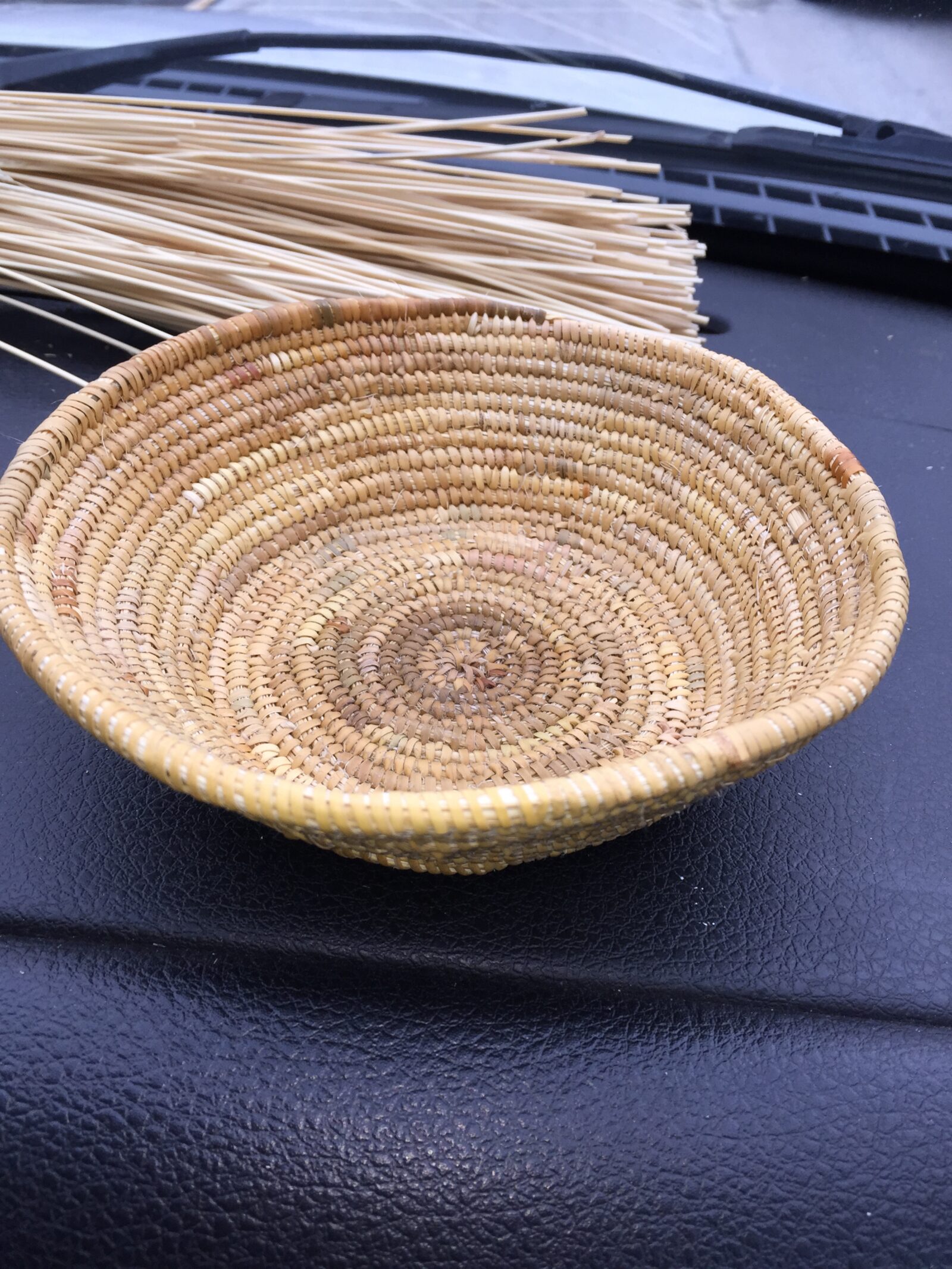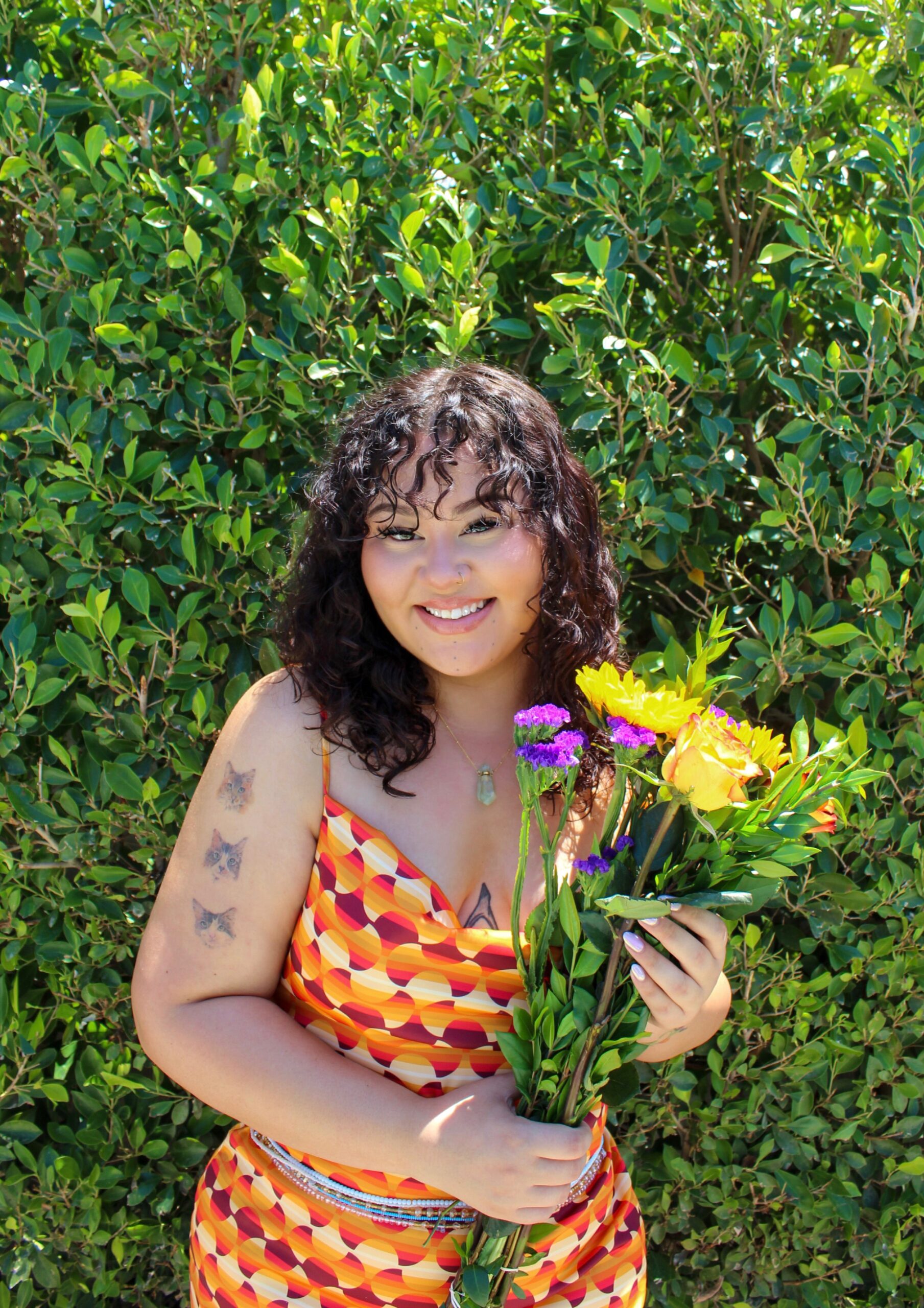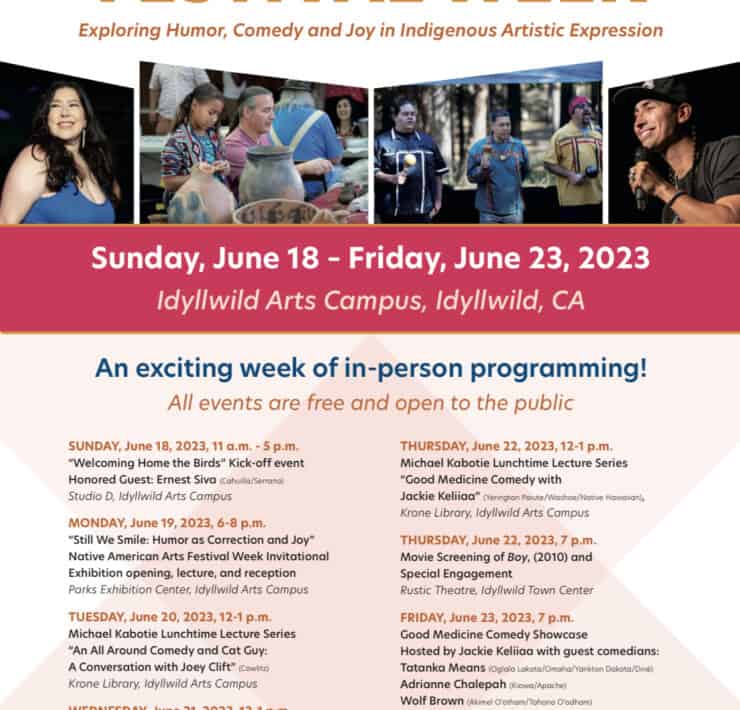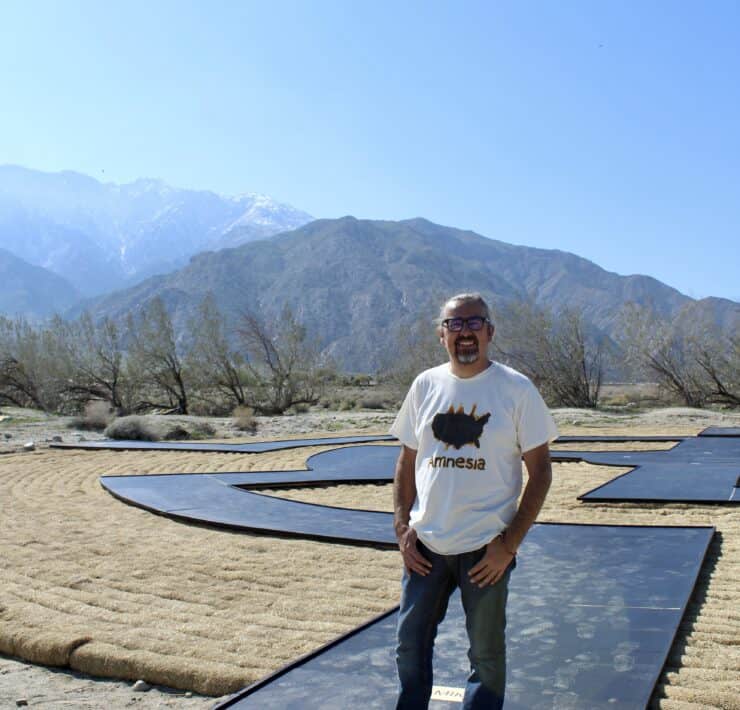
By Emily Clarke
Can you begin by introducing yourself and your role within your community?
My name is Victoria Chubb and I’m a tribal member from the Morongo Indian Reservation. I’m also on the Malki Museum executive board and have been for about two years now. I’m a Morongo Bird Dancer and basket weaver. I’m the youngest member of the museum board and I’m just trying to get the museum more involved within the community. My family has been wanting me to help care for the museum for years because my family has been involved with the museum for generations. I used to come here after school because my mom worked here. Even my older cousin Mary Ann Andreas was on the board and worked here and she was the one who urged me to get involved.
Have you been Bird Dancing your whole life? When and how did you learn?
I’ve been Bird Dancing since I was about 11. We moved to Morongo from New York in 1994 where we had been around ceremonies in that area since I was young. When I came out here to California, that sort of stuff wasn’t really happening. We wouldn’t really ever see a lot of Bird Dancers, but I remember the elders coming to sing at my grandma’s house. My mom also took me to my aunt’s house and that’s around the time that Cahuilla elder Alvino Siva started teaching everybody how to Bird Sing and Dance. We started learning and then we did the Coyote Dance at the museum too.
What role does Bird Dancing play in your life? Why is it important to you?
For me, it’s important to practice our culture because it’s all we have left. A lot of things are gone. Our ceremonies are all gone, so what we do have left we should cherish it. That’s what I try to do. Respect it. Carry it on and teach the kids. I always take my nieces and nephews wherever I go because it’s important for them to learn too. Bird Dancing also plays a big role in my life because there’s events and gatherings every weekend so I always know where I’m going to be in the coming months. It’s also a social thing, you know, you see friends and family and dance together.
Recently, you’ve had the opportunity to teach a few Bird Dancing and sewing classes. How was that experience?
The first time I ever taught was at Morongo school around ten years ago. I taught a Ribbon Skirt (Bird Dance regalia) sewing class and then we learned to dance too. I went to fashion school and took professional classes, so by taking those it helped me teach. To me, it was important to do that because nobody ever sat down with me and taught me how to make a ribbon dress. My cousin made my first dress because my mom didn’t know how to sew. Then, I designed some of my first dresses and had them made by a seamstress, but my mom scolded me because you’re supposed to make your own regalia. So as I got older, I started sewing and taught myself to make Ribbon Dresses. Sometimes traditional Bird can be a touchy subject, but I think it’s important to teach the youth. I’ve taught more kids than I have adults, but I think it’s fun to teach kids. You have to be more fun and easy going, but some of my best students have been little boys. One even sewed a Ribbon Skirt for his little girlfriend.
What is the value of practicing traditional dance within the Native community? Why is it important to you to dance socially at events and with family members?
I think it’s important because it brings us together. One mind, one body, one spirit. We’re all on beat and that’s the one time when all the other BS gets set aside. You just focus on the songs and movement and having a good time with everybody. That’s what I love about it. You can feel the power when everybody’s singing and dancing, all the tribes together. At one of the recent powwows I was getting dizzy becauseI could really feel the vibrations. Some people don’t think there’s power there anymore, but to me there is because we’re still here. There’s also a connection between our language and our Bird Songs, which is also an important thing to keep alive. The language is another valuable aspect because even if we have the songs, we have to know what they’re saying. But really, just being together and having that public acknowledgement of your culture is good. Not everyone in the community is going to be a Bird Singer or Dancer and that’s okay, but even just being in witness of it and experiencing it is important. That’s still a part of it.
When and how did you learn to basket weave? What role does it play in your life?
I started weaving about twelve years ago. Morongo held a class, taught by Rosie Salinas (Cahuilla) and her sister, the late Sue Hill, and I started with that for about a year. In 2012, Morongo hosted the California Indian Basketweavers’ Association, so I entered my first basket into their exhibit. That’s what started it and I liked it and kept going. In 2017, I took a class at Idyllwild Arts Academy with Roseanne Hamilton (Cahuillla). I do basket weaving demonstrations and talk to schools, but I don’t teach because I feel like I’m still a student. To me, weaving opened up a whole new door. It helped me do museum work and also got me into the Andrew W. Mellon Opportunity for Diversity in Conservation program at UCLA in 2019. Me, my cousin, and a friend all signed up and got accepted. We stayed in the dorms for a week and learned about the conservation of textiles, books, pottery, and paintings. It was a very rigorous program but it was nice. To us though, it was different. Everyone was younger and already getting their masters but we were older and just starting college at California Indian Nations College. But still, we knew where we wanted to go and what we wanted to do.
Why is it important to you to continue to practice cultural arts such as basket weaving and Bird Dancing?
It’s important because my great grandmother Candelaria Saubel (Cahuilla) was a basket weaver. When my grandmother was young, she was sent to government boarding school, so that tradition was never learned. My mom didn’t get to learn and I didn’t get to learn. I keep going for them. I always say that I do it for my great grandmother.
You graduated from CINC last year. What did you study and why?
I studied Liberal Arts with an emphasis in Business technology. You can’t go wrong with Business. Now, I want to go get my BA in Studio Art and Art History. Or a Museum Studies program. To me, I just want to help the Malki Museum right here at home. If school takes me to other places, that’s cool too, but I want to help out this museum to the best of my ability.
Why were you inspired to attend CINC? What was the experience of studying at a tribal college like? What do you think is the importance of Native people pursuing education?
CINC was a more family-based environment than my experience with college before. Native students also seem to have more of an input. Like in US History class, it was encouraged for us to express our perspective. Our professors were encouraging and were more inclusive of our tribal perspective. The environment also seemed more relaxed and less-racial. When I was at college before CINC, I would get a lot of racial comments. Like in my Public Speaking class, someone asked, “how come she only talks about Native stuff?” I remember the teacher responding “She’s talking about what she knows.” After I got sober, everyone told me not to get bored, so I signed up for school. I think more people should pursue any education, not just college, because we’re always learning. Sometimes college isn’t for everyone, maybe it’s a trade school that’s for you. But to me, if more Natives are in college, there’s more opportunity to share our perspectives and the true history of what Native people went through.
Do you have anything else you would like to share or do you have any advice for young tribal women who are looking up to you?
For any young Native women, don’t be scared. If you want to try something new, try it. If you want to Bird Dance or learn to basket weave, do it. There’s so many classes and groups at all the reservations lately and everyone’s super welcoming when you go there. Don’t be afraid to try it and let’s keep our culture alive.










